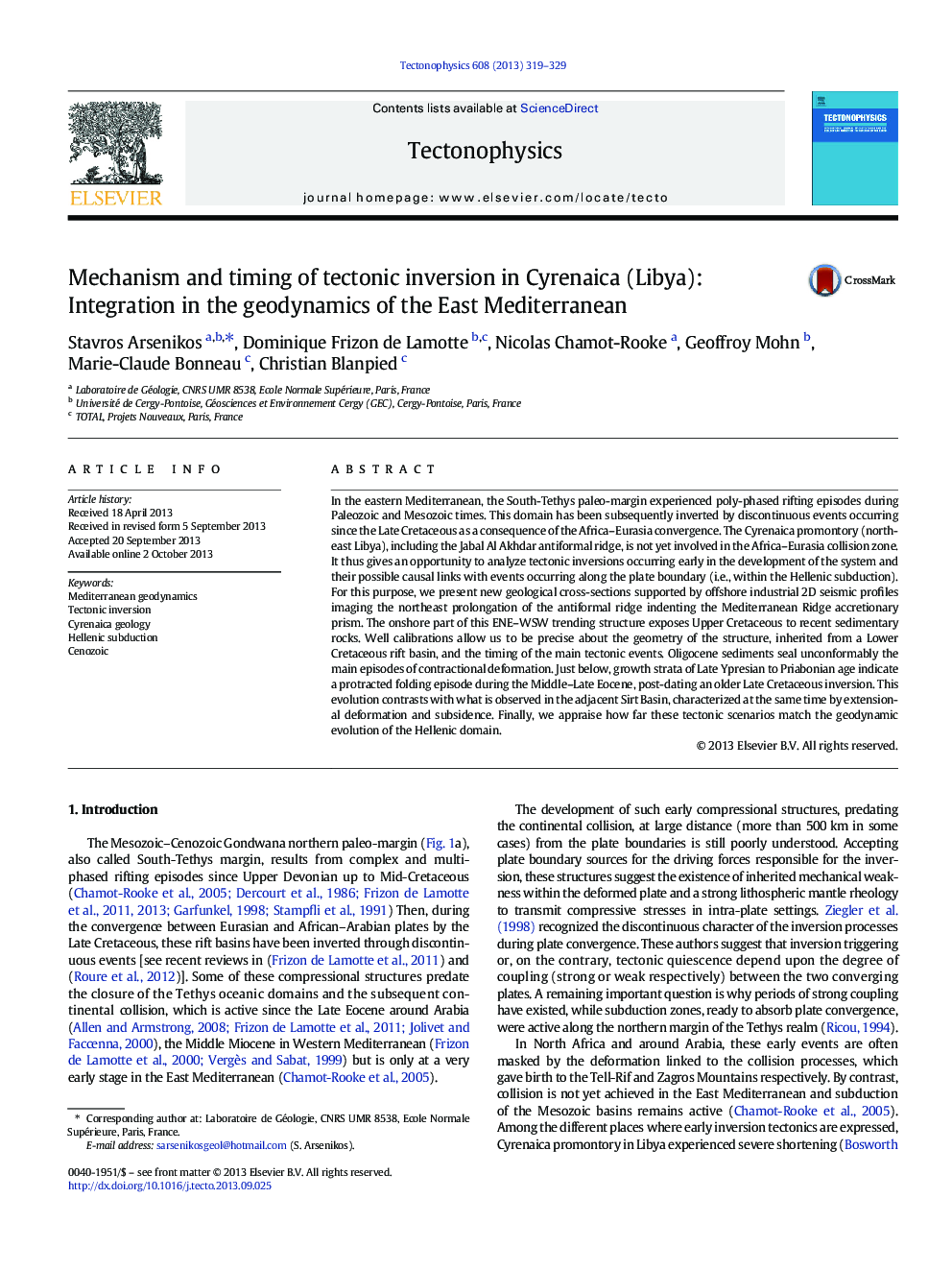| کد مقاله | کد نشریه | سال انتشار | مقاله انگلیسی | نسخه تمام متن |
|---|---|---|---|---|
| 6433947 | 1636779 | 2013 | 11 صفحه PDF | دانلود رایگان |

- We establish 5 cross sections depicting the tectonic evolution of Cyrenaica.
- We establish the onshore-offshore continuity of the inverted domains.
- The main tectonic inversion phase took place during Middle-Upper Eocene.
In the eastern Mediterranean, the South-Tethys paleo-margin experienced poly-phased rifting episodes during Paleozoic and Mesozoic times. This domain has been subsequently inverted by discontinuous events occurring since the Late Cretaceous as a consequence of the Africa-Eurasia convergence. The Cyrenaica promontory (northeast Libya), including the Jabal Al Akhdar antiformal ridge, is not yet involved in the Africa-Eurasia collision zone. It thus gives an opportunity to analyze tectonic inversions occurring early in the development of the system and their possible causal links with events occurring along the plate boundary (i.e., within the Hellenic subduction). For this purpose, we present new geological cross-sections supported by offshore industrial 2D seismic profiles imaging the northeast prolongation of the antiformal ridge indenting the Mediterranean Ridge accretionary prism. The onshore part of this ENE-WSW trending structure exposes Upper Cretaceous to recent sedimentary rocks. Well calibrations allow us to be precise about the geometry of the structure, inherited from a Lower Cretaceous rift basin, and the timing of the main tectonic events. Oligocene sediments seal unconformably the main episodes of contractional deformation. Just below, growth strata of Late Ypresian to Priabonian age indicate a protracted folding episode during the Middle-Late Eocene, post-dating an older Late Cretaceous inversion. This evolution contrasts with what is observed in the adjacent Sirt Basin, characterized at the same time by extensional deformation and subsidence. Finally, we appraise how far these tectonic scenarios match the geodynamic evolution of the Hellenic domain.
Journal: Tectonophysics - Volume 608, 26 November 2013, Pages 319-329